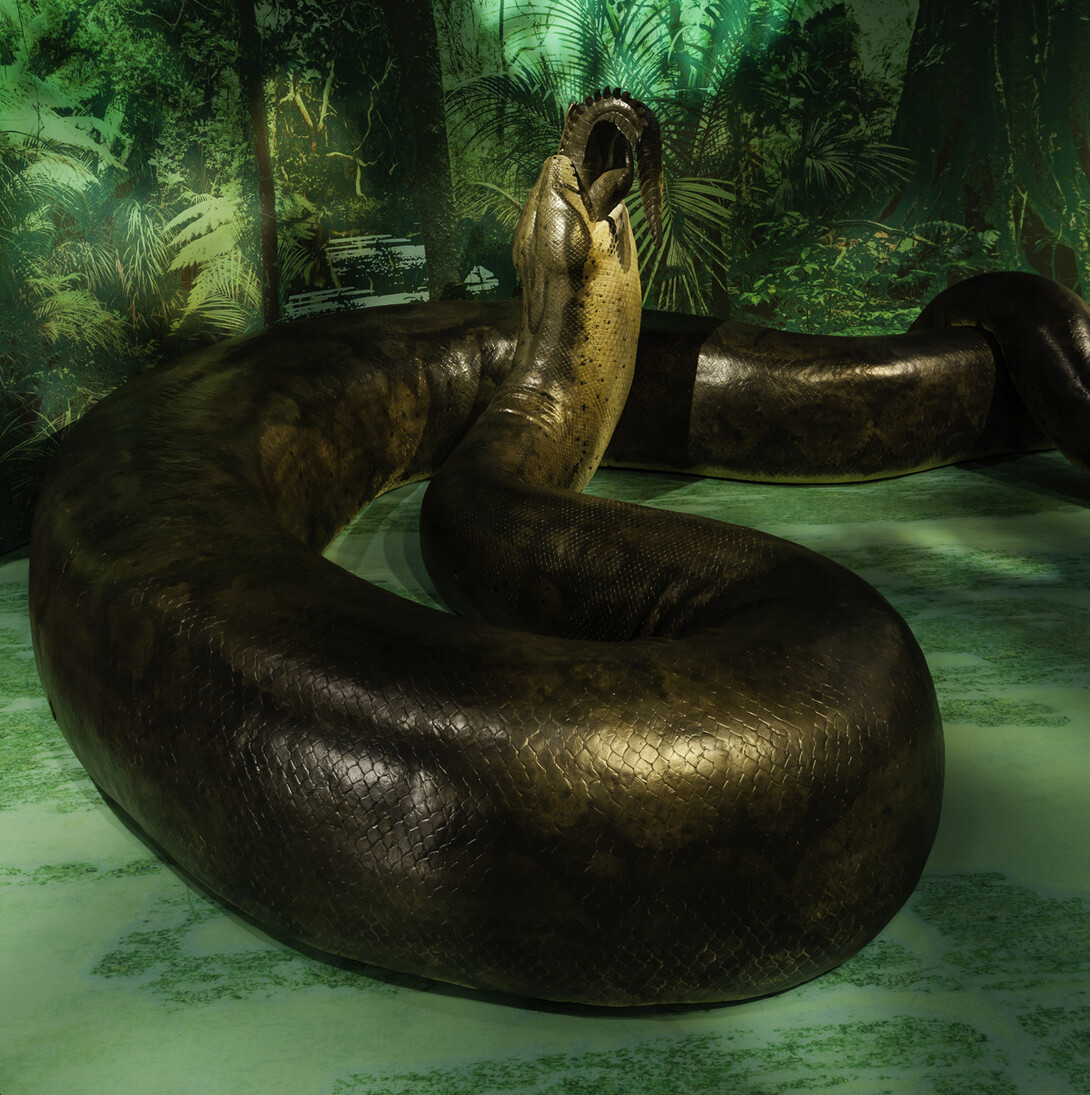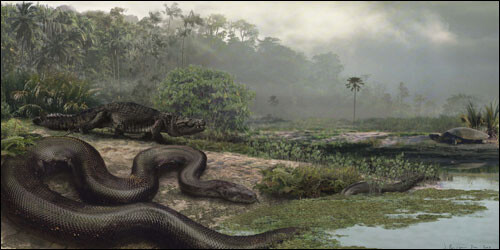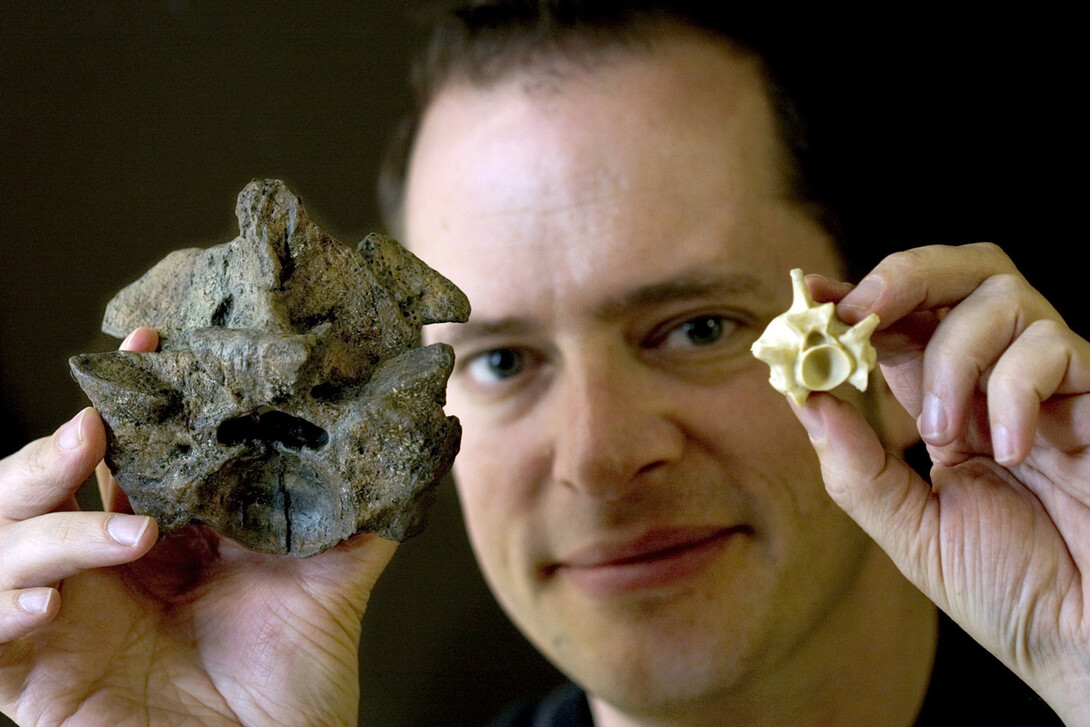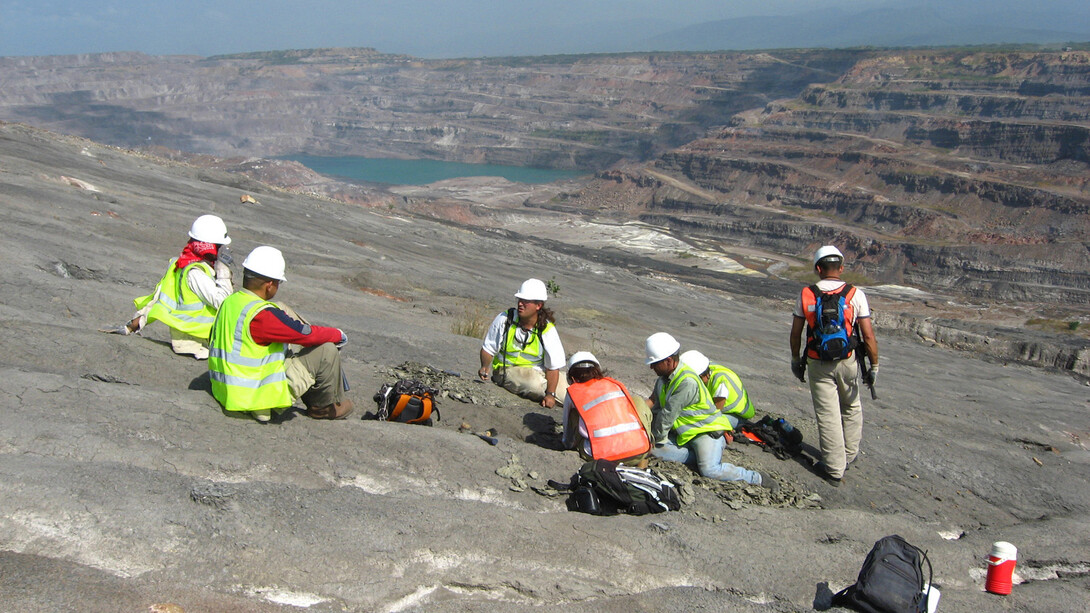
Slithering in at 48 feet long, a realistic replica of the world’s largest snake will be on exhibit Feb. 22 through Labor Day at the University of Nebraska State Museum in Morrill Hall.
Titanoboa lived 60 million years ago and weighed up to an estimated 2,500 pounds. Celebrating the new Smithsonian Affiliation of the State Museum, this remarkable Smithsonian exhibit will feature a striking full-scale model of Titanoboa.
The exhibit includes fossils and bones of Titanoboa and modern reptiles, exhibits on past environments and clips from the Smithsonian Channel documentary, “Titanoboa: Monster Snake.” Visitors will learn about the discovery, reconstruction and implications of this enormous reptile.
The exhibition is a collaboration between UNL, the Florida Museum of Natural History, the Smithsonian Tropical Research Institute (STRI) and the Smithsonian Institution Traveling Exhibition Service.
The startling discovery of Titanoboa was made by a team of scientists working in the world’s largest open-pit coal mine at Cerrejon in La Guajira, Colombia. Collecting expeditions over the last decade have produced finds of giant turtles and crocodiles, as well as the first-known bean plants and some of the earliest banana, avocado and chocolate plants. The most spectacular discovery is the fossilized vertebrae of a previously undiscovered species of snake.
Jason Head, assistant professor of earth and atmospheric sciences at UNL and curator of vertebrate paleontology in the NU State Museum, joined forces with Jonathan Bloch of the Florida Museum of Natural History and Carlos Jaramillo of STRI to unlock the mysteries of this ancient time and learn more about how Titanoboa lived and hunted.
The fossilized remains revealed that, after the extinction of the dinosaurs, the tropics were warmer than today and witnessed the birth of the South American rainforest, in which huge creatures fought to become the top predators. Dominating this era was Titanoboa, the undisputed largest snake in the history of the world.
For more information, go to http://museum.unl.edu/titanoboa.











